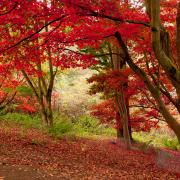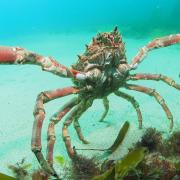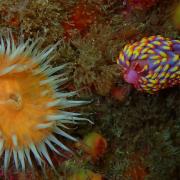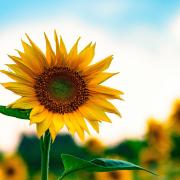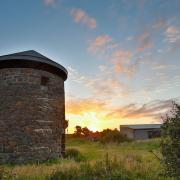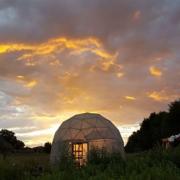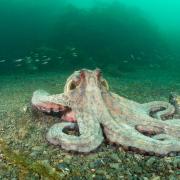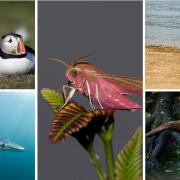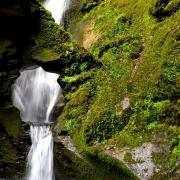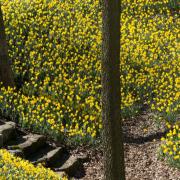Pauline Penna from the Cornwall Wildlife Trust explains about fungi and where you are most likely to see them around the county
An autumn woodland stroll can turn into a journey of discovery as fungi (mushrooms and toadstools), in all their shapes and sizes, push up through the leaf litter. Fungi is a fascinating and little studied kingdom of organisms, with over 14,000 species in the UK alone, many of which have been recorded in Cornwall and more may yet be discovered.
Fungi are produced by a web of threads known as the ‘mycelium’, which spread through the soil, leaf litter and woodland debris. The mycelium produces special chemicals called ‘enzymes’ which digest fallen wood and leaves; this is how fungi get their nutrients. A benefit of this process is that the woodland plants growing near the fungi also have access to the nutrients, helping them to grow.
Each autumn brings its surprises. The classic ‘mushroom’ is the most easily recognised shape, but take some time to hunt around and you may be rewarded with an array of unusual shapes, colours, textures and smells.
The variety of shapes found is remarkable: ball-shaped, coral-shaped, tubular, brackets, cups and many more. The different shapes are due to the different ways in which fungi release their ‘spores’. Fungi produce spores to reproduce, like a flower produces seeds. Look out for the small golden ‘antlers’ of the yellow stagshorn (Calocera viscosa) on conifer tree stumps. These are found in conifer plantations, their tiny yellow branches held aloft so the slightest breeze will sweep away spores from their surface.
Another interestingly shaped fungus found at the base of conifers is the wood cauliflower (Sparassis crispa). This forms a large ball consisting of many wavy, cream coloured lobes, fused at the base. The heaviest can weigh up to 14kg. This is a delicious edible nutty flavoured fungus.
For a range of cap colour it is hard to beat the brittlegill or Russula family. This large group has colours covering the whole spectrum, a classic mushroom shape with regular, white or creamy gills and generally white stripes.
One of the most commonly seen fungi in Cornish woodlands is the ochre brittlegill (Russula ochroleuca). It’s deep yellow caps show up well among fallen autumn leaves. If you should find a more honey-coloured specimen, do smell it by taking a pinch of the cap and gills, it may be the geranium brittlegill (Russula fellea). This species grows below beech, whereas the more common one grows with a wide range of trees and has no smell.
When among beech trees, look up into the branches because you may see the translucent white caps of the porcelain fungus (Oudemansiella mucida). This fungus looks like inverted, miniature porcelain teacups and has a very slimy coating. If you find some which has fallen to the ground, feel its slippery texture.
Conversely, the razor strop fungus (Piptoporus betulinus) has leathery brackets. Found throughout Cornwall on birch trees, it first appears as a white bulbous growth erupting from the trunk, the bracket shape forming as it matures. It attacks weakened trees and eventually kills them.
All of the senses come into play when looking for and identifying fungi. A good sense of smell is very useful, although there is one fungus that few noses fail to detect! The stinkhorn (Phallus impudicus) is aptly named; once smelled, never forgotten – it is foul. The smell comes from the slimy green spore mass on the head of the stem. Look out for the more delicate dog stinkhorn (Mutinus caninus) with its pointed orange head. Both develop from spherical white ‘eggs’ in the leaf litter. If sliced in half the developing stem is visible surrounded by a layer of jelly. It is said to be edible at this stage, although it doesn’t look too appetising!
Some fungi smell very pleasant. Curry fans should look out for the curry milk cap (Lactarius camphoratus). This lovely chestnut-brown mushroom develops its distinctive smell as it dries out. If you run a fingernail over the fresh gills a white milk oozes out, which gives this large family, the milk caps, their name. The colour of the milk, any changes it undergoes in air and its taste are features which aid identification. But beware, the milk ranges in taste from neutral to fiery hot as in the fiery milkcap (Lactarius pyrogalus). This has a buff to grey cap, yellowish gills and grows under hazels. The milk turns pale green as it dries and a little on the tip of the tongue makes a jalapeno seem insipid!
These are just a few of the 10,000 species of fungi in the UK that occur in Cornwall, so do have a closer look around the woodlands this autumn. When you’ve seen some fungi, the Environmental Records Centre for Cornwall and the Isles of Scilly (ERCCIS), hosted by Cornwall Wildlife Trust, want to hear from you! Send them the details of what you’ve seen either online at www.erccis.co.uk or call 01872 273737. If your interest deepens do join a local fungi group, it’s the easiest way to increase your knowledge. Happy hunting!
For further information, events, and to support Cornwall Wildlife Trust, contact Cornwall Wildlife Trust, Five Acres, Allet, Truro, TR4 9DJ. 01872 2739389, www.cornwallwildlifetrust.org.uk
Where to see Fungi
Cornwall Wildlife Trust nature reserves are a great place to see fungi. The Trust manages them for wildlife, providing a place of refuge where wildlife, including fungi, can thrive. For further information visit www.cornwallwildlifetrust.org.uk/nature_reserves
Cabilla and Redrice Woods Nature Reserve, near Bodmin, PL30 4BE, is a 190-acre ancient woodland that is a great place to see a variety of fungi.Devichoys Wood Nature Reserve, near Truro, TR3 7PE, is a 40-acre mixed woodland. Look out for geranium brittlegill, ochre brittlegill and porcelain fungus.Pendarves Wood Nature Reserve, near Camborne, TR14 0RR, is a 40-acre broadleaf woodland with lovely walks where you’ll see a range of fungi.Kennal Vale Nature Reserve, Ponsanooth, TR3 7HJ, is a 20-acre woodland with interesting old gunpowder works where you are sure to see fungi.
Fungi groupsCornwall Fungus Recording Group: 01209 210281
Guided field tripsCornwall Wildlife Trust Forestry Commission: enquiries.peninsula@forestry.gsi.gov.uk







